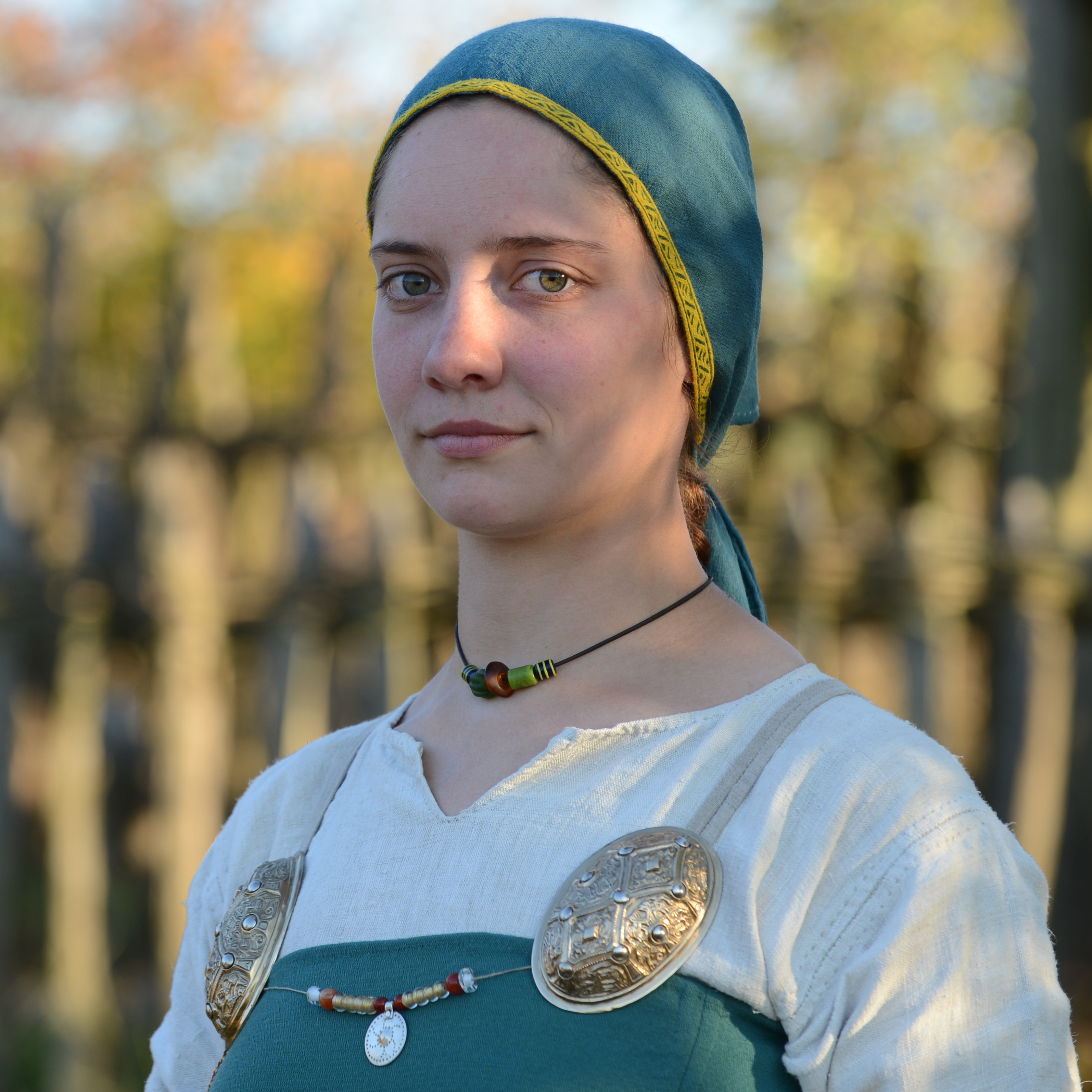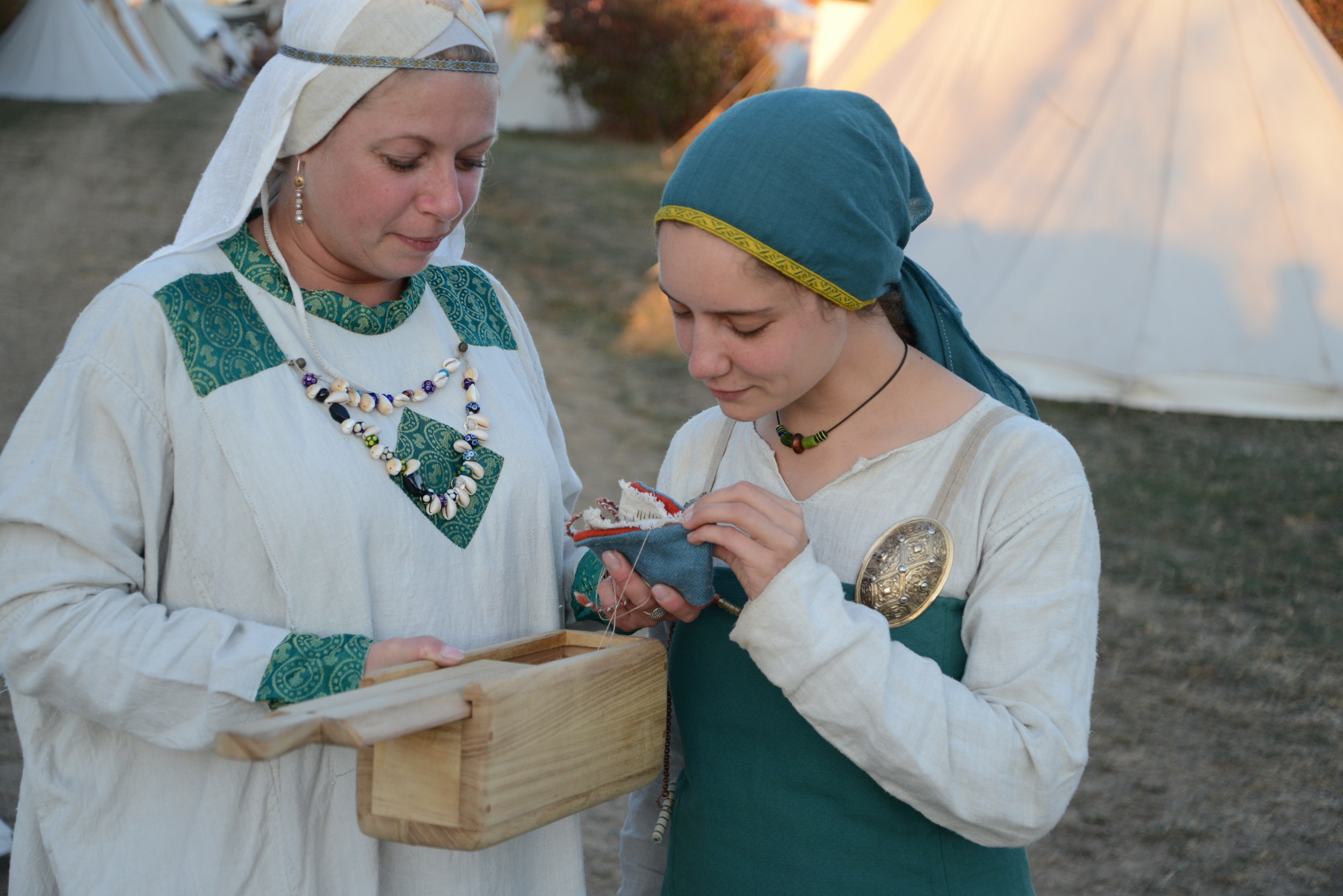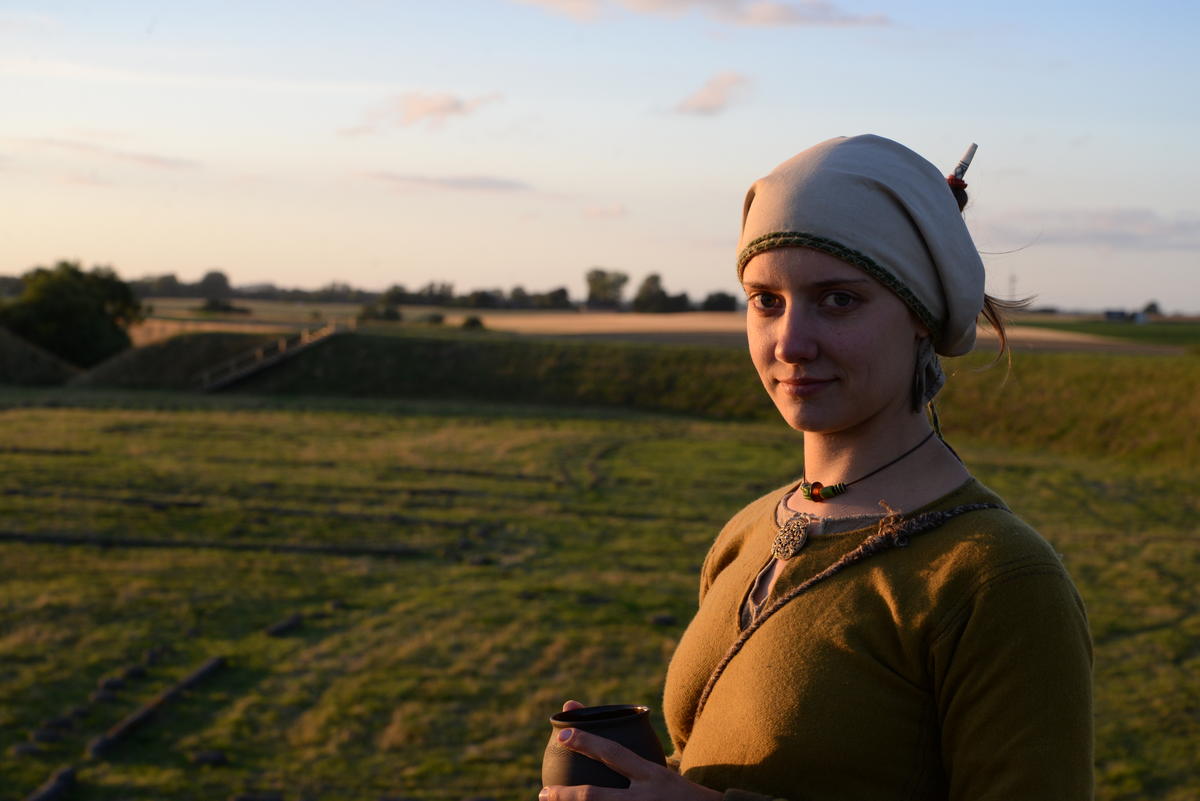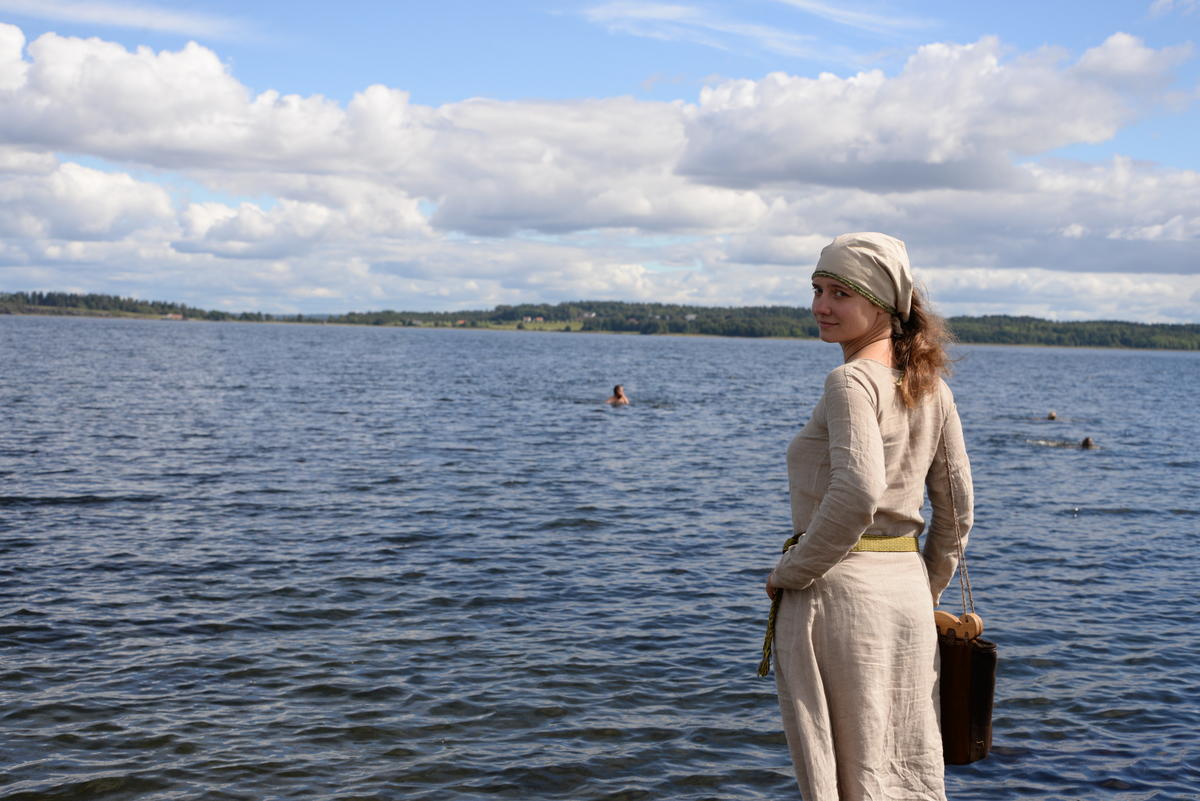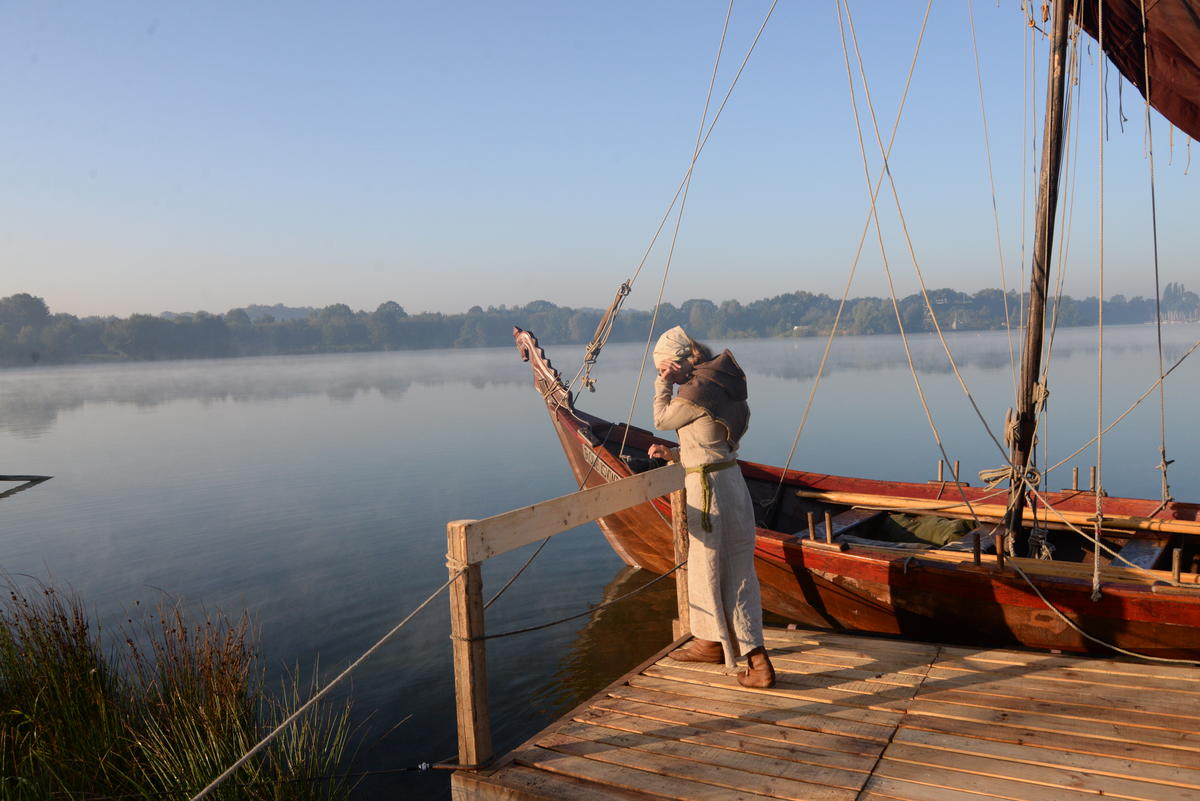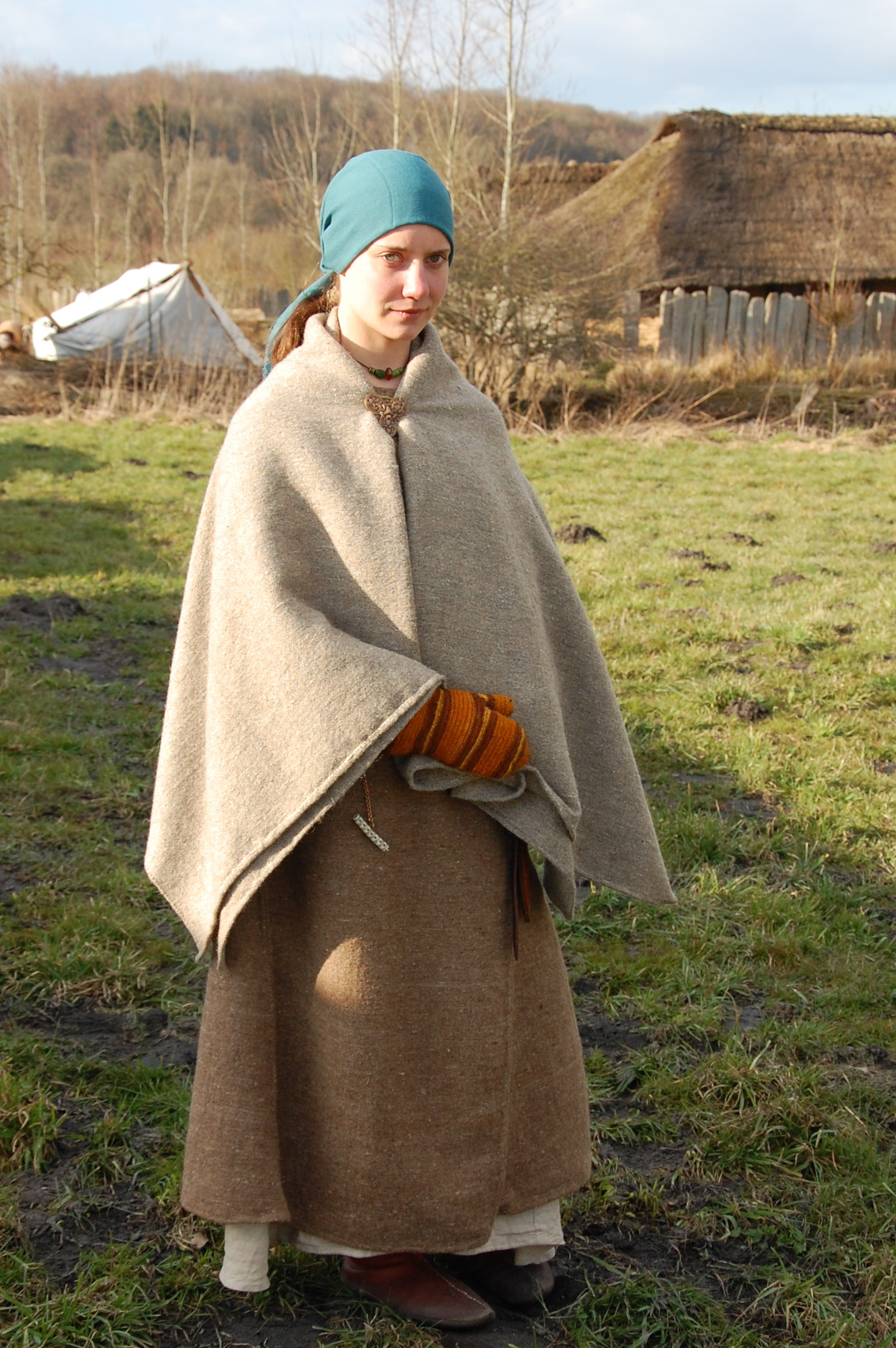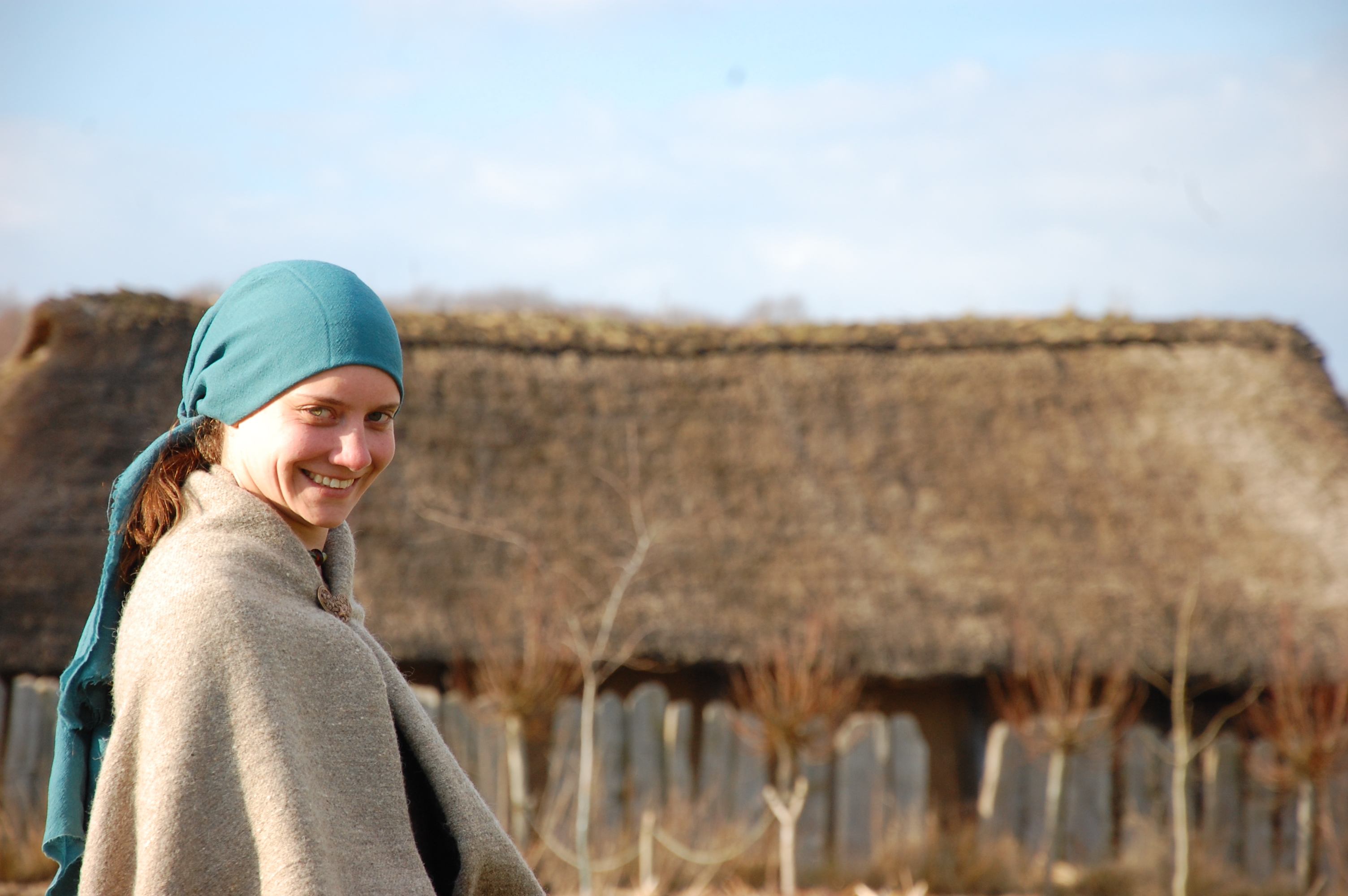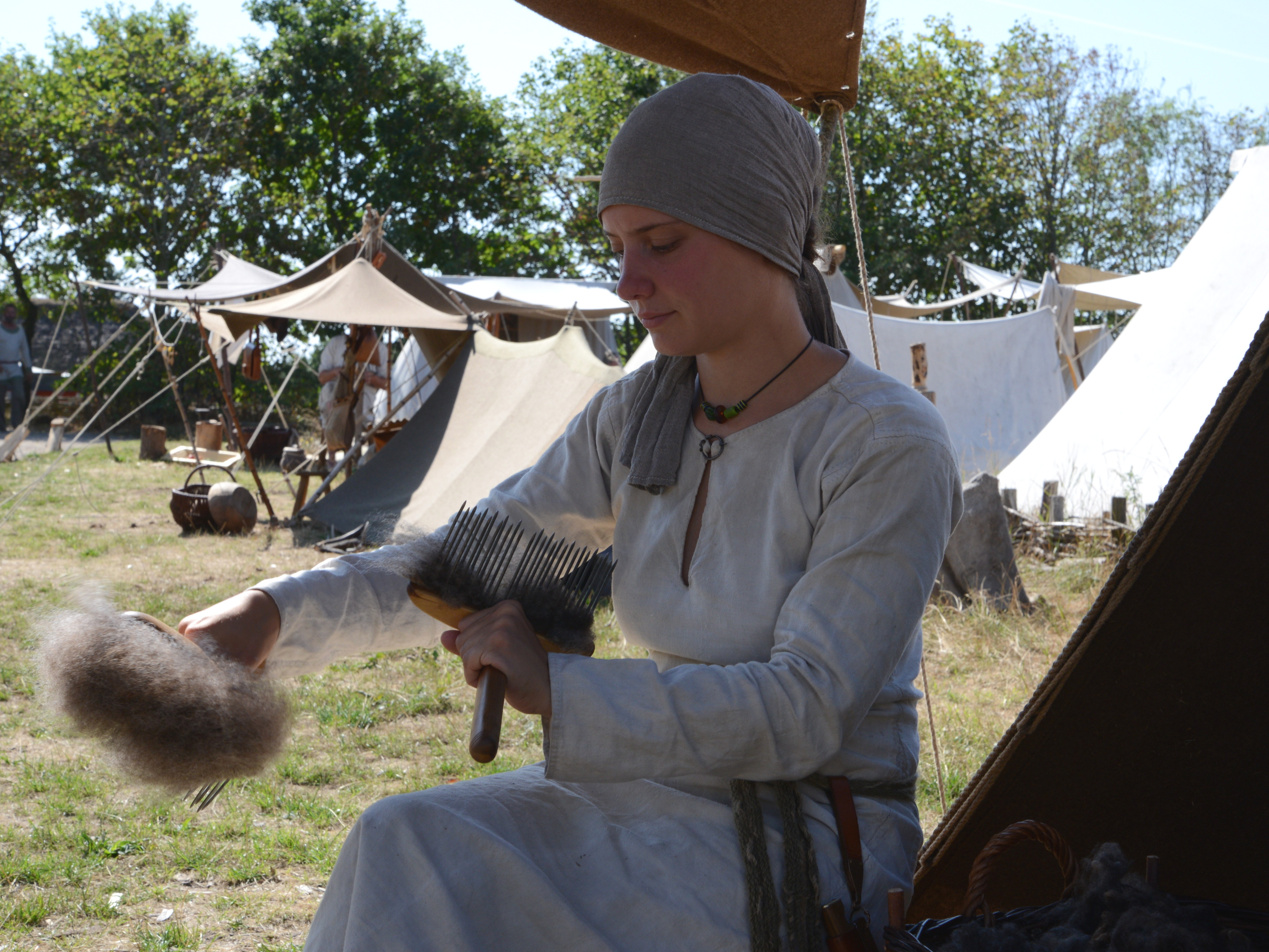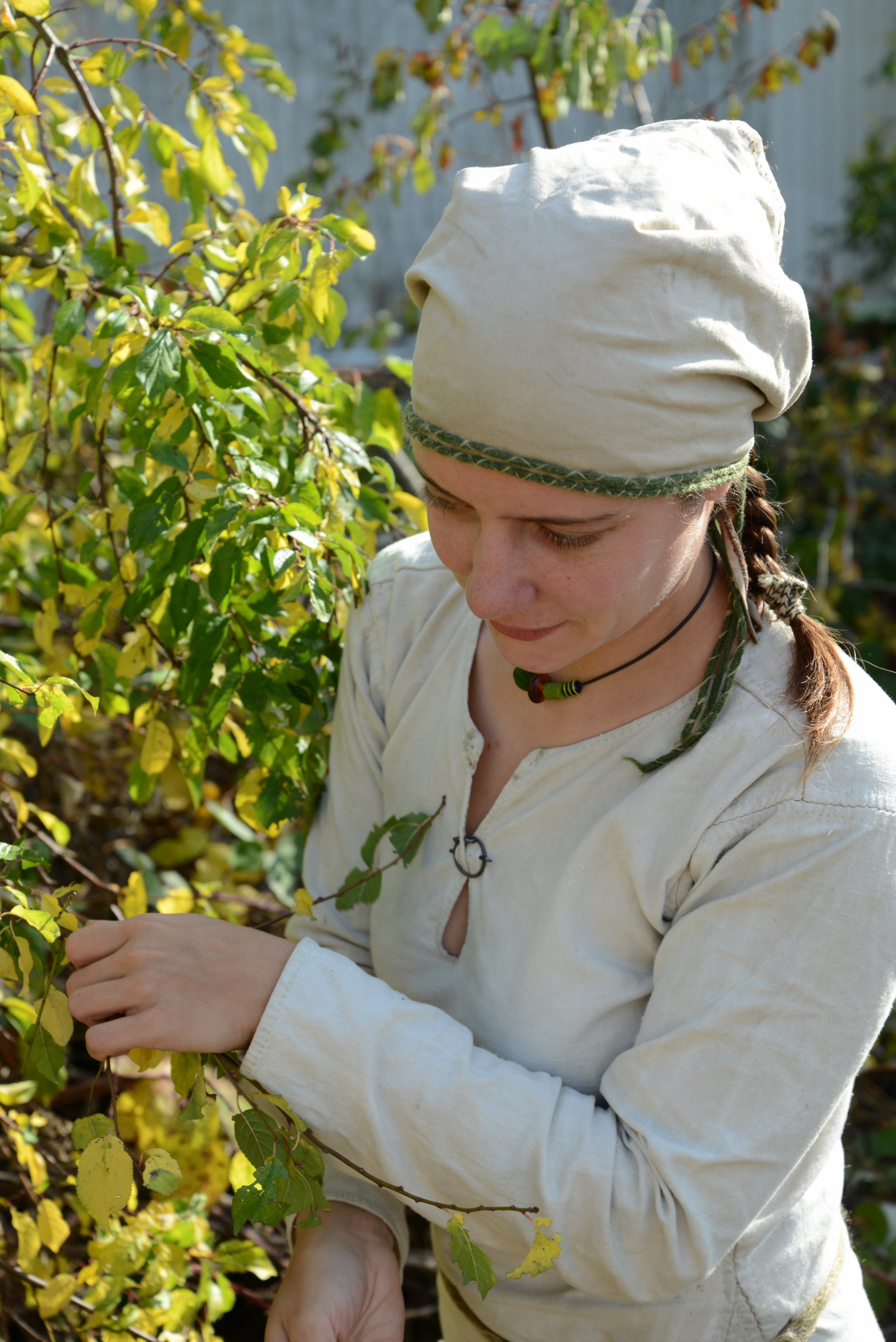Ása Guðrúnsdóttir
No info about Asa yet-For Ása (almost) everything revolves around textiles, starting with the sheep and the different qualities of the fleece up to the finished piece. Depending on her status and place in the social hierarchy, different aspects of textile handicraft would have been in the focus of her own work.
As a wealthy woman from Birka
As a wealthy woman from Birka, Ása would not have to do all everyday work herself; she and her husband would have bought some slaves on the market. She's still overlooking everything, of course, for even if she doesn't have to sort her beets by her own hand, it has to be taken care of that everything is done right. Some slaves do not yet understand her language, so he has to keep an eye on their work, a short explanation won't do. Also, all expenses and incomings have to be controlled.
During the last years they managed to get a hold in the city's textile industry. They get the wool for the simpler clothes from the farmers of the surrounding countryside, but those fleeces from the local sheep breeds are seldom suitable for finer stuff. For this, they have to buy textiles which the merchants bring from the East. The sorting and combing of the wool is being done by her slaves and those workers who work for wages. The skilled ones do the spinning. The spindles have whorls made of clay which are all of similar size and weight, which is important because otherwise the finished cloth would be made of threads of different thickness and strength. If everyone uses similar tools and spins in a similar manner there is less variability among the finished products.
It is a lot of work to spin all this yarn, much more than the weaving later. That's why even Ása seldom puts the spindle out of her hand. She knows that it is a person's fate she is working into the thread: Is it going to be thick and later protect someone against bad weather as a warming cloak, or is it going to be fine and dyed in bright colours, so symbolize someone's status as a precious garment? The thread must not be spun too hard or too soft, too, for otherwise the garment might not keep very long. The most precious cloak will end up being good for caulking only once it is worn out or full of holes because it wasn't produced properly.
As a farmer's wife from the Mälar valley
As a simple farmer's wife from the Mälar valley, she probably would have owned some sheep together with her husband. Depending on the size of their herd the wool would be just enough for their household needs or they would have some surplus - as the raw material, the spun thread or even finished cloth - which they could trade for something they cannot produce themselves on the farm. Her everyday clothes might not have been dyed because work on the farm is dirty and the dyeing might not be worth it. On special occasions, however, she would take out her finest garments together with jewelry and some beads. Those she got as a gift after some especially well done trade.
Depending on how well she and her husband are managing the farm, they could afford one or two slaves. This would relieve her form some of the work. But she would still have to keep an eye on everything: How much of last year's harvest is left, where are they short on supplies? How many animals could they bring through the winter? Whose trousers have to be mended again, are there any clothes that have to be replaced? Which tools have to be taken to the smith for repair and is it possible to pay him? Only some of many everyday questions.
No matter how much things change over the years, one thing always stay the same: The wool needs to be plucked and combed, the spindle with the clay whorl is turning, ever turning. With a lighter spindle she might be able to make thin threads for fine ribbons like the ones she saw in the rich women in Birka. But those were made of silk and silver, nothing she would be likely to afford. Besides, she seldom has the time to make ribbons; usually it's simple fabrics she's weaving on her warp-weighed loom when another garment has become so worn that it can only be used as rags.
